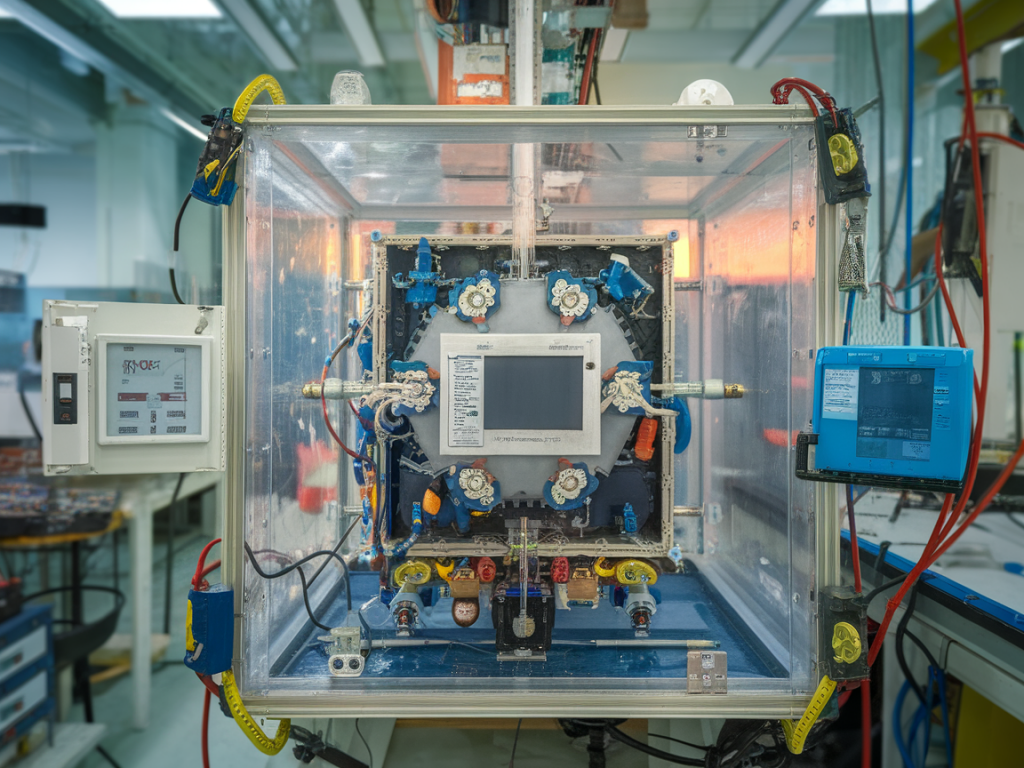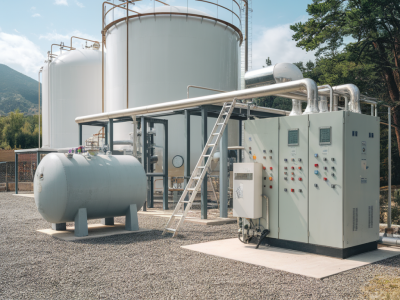
The world is at a critical juncture in our pursuit of clean, reliable, and scalable energy solutions. While renewable energy sources such as wind and solar have made remarkable strides, the conversation around nuclear energy is once again capturing global attention, fueled in part by the development of Small Modular Reactors (SMRs). But what exactly are SMRs, and could they really reshape the dialogue around nuclear energy safety? Let's delve into this fascinating innovation and its potential to redefine the energy landscape.
What Are Small Modular Reactors?
Small Modular Reactors, or SMRs, represent a new generation of nuclear reactors designed to be smaller and more flexible compared to traditional large-scale reactors. Unlike their larger counterparts, SMRs are built in factories and then transported to their operational sites, making the construction process faster, more cost-effective, and less susceptible to delays caused by on-site issues.
The “modular” aspect is particularly significant. SMRs use a standardized design that allows multiple units to be added over time, enabling greater scalability. For countries or regions with constrained grids or lower energy demands, this modularity provides the flexibility to start small and expand as needed without the financial risk of building a massive, singular reactor.
Some of the key players leading in SMR technology include NuScale Power, Rolls-Royce SMR, and China's CNNC. Each of these companies is pushing the envelope on how nuclear energy can be deployed more efficiently and responsibly.
Why Are SMRs Safer?
Historically, public skepticism of nuclear energy has revolved around two major concerns: accidents and radioactive waste. SMRs have been specifically designed to address both of these issues, introducing technologies and safety mechanisms that set them apart from older models.
1. Passive Safety Systems: Traditional large reactors often rely on active safety systems that require external power sources or human intervention to operate. SMRs, on the other hand, incorporate passive safety systems—features that function without any external power or manual adjustments. For example, some SMRs have built-in cooling mechanisms that rely on natural circulation, gravity, or stored energy to prevent overheating in case of a malfunction.
2. Underground Placement: Many SMRs are designed to be installed underground. This not only protects the reactor from external threats (like natural disasters or terrorist attacks) but also minimizes the risk of radiation leakage in the unlikely event of an accident.
3. Reduced Fuel Requirements: SMRs use smaller quantities of nuclear fuel, which reduces the amount of radioactive material present on-site at any given time. Additionally, some designs, like those by NuScale, emphasize longer fuel cycles, meaning the reactor requires less frequent refueling. This helps reduce handling risks.
4. Factory-Standardized Construction: Because SMRs are constructed in centralized manufacturing facilities, they benefit from stringent quality control. Traditional reactors built on-site often face site-specific challenges that may compromise safety during construction. Eliminating these variables ensures that SMRs meet consistent safety benchmarks.
Cost Benefits and Accessibility
One of the biggest barriers to traditional nuclear power has always been its cost. Large-scale nuclear plants are infamously expensive to design, construct, and maintain. Delays and budget overruns during construction are common—and these factors discourage investment, especially in developing countries.
SMRs sidestep many of these challenges by offering a more cost-effective approach. Their modular construction means shorter build times and reduced up-front investment. Furthermore, a smaller initial size makes SMRs an attractive option for regions with limited financial resources or smaller populations. For instance, a single SMR could power a remote industrial site, a small town, or even a rural medical facility, bringing modern energy to places that were previously out of reach.
Companies like Rolls-Royce SMR estimate that their reactors could deliver electricity at a competitive cost compared to fossil fuels, effectively democratizing access to nuclear energy.
How Do SMRs Fit Into the Fight Against Climate Change?
With global carbon reduction goals becoming more ambitious each year, SMRs could be a significant part of the solution for decarbonizing the energy mix. Here’s why:
- Zero Carbon Emissions: Like all nuclear reactors, SMRs produce electricity without emitting greenhouse gases. As we pivot away from coal and natural gas, these reactors provide a steady, low-carbon energy source—a crucial complement to intermittent renewables like solar and wind.
- Efficient Land Use: SMRs require much less land than solar or wind farms of equivalent capacity, making them a welcome solution for urban areas or regions with limited space.
- Decentralized Energy Systems: Because they’re smaller and more adaptable, SMRs can be deployed in a decentralized manner, reducing reliance on massive centralized power grids and cutting down transmission losses.
Some governments are already taking notice. Canada and the UK, for example, have both included SMRs in their official energy strategies, citing their potential to meet emission targets while supporting energy resilience and innovation.
Challenges Ahead
Despite their promise, SMRs are not without challenges:
1. Regulatory Hurdles: Nuclear regulations are notoriously stringent, and rightly so. However, current frameworks are often designed for traditional large reactors, meaning SMR developers face lengthy approval processes that don’t always account for their unique designs.
2. Public Perception: Overcoming the stigma attached to nuclear energy—due to high-profile incidents like Chernobyl and Fukushima—remains a significant challenge. Even with improved safety measures, public trust needs to be rebuilt to ensure widespread adoption.
3. Waste Management: While SMRs generate less waste than traditional reactors, the issue of nuclear waste disposal persists. Long-term solutions, such as deep geological repositories, will still be required.
4. Economic Viability: Though they promise cost reductions, SMRs are still in early stages of commercialization. Scaling production to achieve competitive pricing will require significant investment and global collaboration.
The Future of Nuclear Energy?
Could SMRs signal a turning point for nuclear energy? Based on their innovative safety features, economic benefits, and environmental promise, they certainly hold the potential to redefine how we think about nuclear power. However, as with any emerging technology, success will depend on addressing challenges head-on while building public and governmental support.
As I continue to follow the developments in this space, I am encouraged by the partnerships forming across industries and borders to turn SMRs from a promising concept into a practical, global solution. Whether you're an energy enthusiast or a concerned global citizen, this is a space worth watching closely—it could very well change the narrative on nuclear energy for good.

